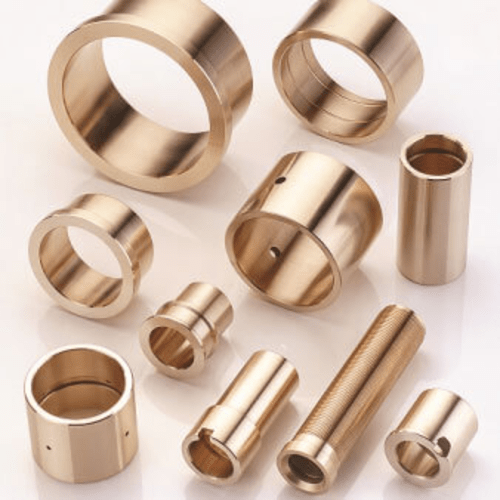Product Name: Phosphorus Bronze Bushes
Sizes, Applications, Alloys, Specifications, and FAQs
Introduction: Phosphorus bronze bushes are indispensable components in various industries, celebrated for their remarkable wear resistance, corrosion resilience, and strength. Whether you’re an engineer, manufacturer, or someone eager to discover more about these versatile elements, this comprehensive guide will equip you with all the knowledge you need. In this article, we will dive into the manufacturing process, applications, phosphorus bronze alloy variations, specifications, technical data, and frequently asked questions about phosphorus bronze bushes.
Manufacturing Process: Phosphorus bronze bushes are typically produced through the centrifugal casting method. This process guarantees uniform alloy distribution, minimizes impurities, and enhances the overall quality of the bushes. Molten phosphorus bronze is poured into a rotating mold, resulting in cylindrical shapes, which are later machined to meet specific requirements.
Sizes: Phosphorus bronze bushes come in various sizes to cater to the diverse needs of different industries. Common size ranges include inner diameters ranging from 1/4 inch to 16 inches or more, outer diameters from 1/2 inch to 20 inches, and lengths from 1 inch to 24 inches or longer. Custom sizes can also be manufactured to meet unique project requirements.
Applications: Phosphorus bronze bushes are widely employed across various industries owing to their exceptional properties. Some common applications include:
- Aerospace Industry: Utilized in aircraft components, landing gear, and bearings.
- Automotive Industry: Found in engine components, transmission systems, and suspension parts.
- Marine Industry: Essential for ship components, propellers, and offshore equipment due to their resistance to seawater corrosion.
- Electrical Engineering: Used in electrical connectors and switches due to their excellent electrical conductivity.
- Oil and Gas Industry: Employed in drilling equipment, valves, and bushings.
Alloys: Phosphorus bronze bushes are manufactured from various phosphorus bronze alloys. Common alloys include:
- C51000 (UNS C51000): Known for its high corrosion resistance, making it suitable for marine and chemical applications.
- C54400 (UNS C54400): Offers excellent wear resistance and is often used in heavy machinery components.
- C52100 (UNS C52100): This alloy provides high strength and is suitable for applications with heavy loads and stress.
Specifications: Phosphorus bronze bushes must adhere to specific industry standards and specifications, such as ASTM B505 and SAE J461. These standards ensure the quality and consistency of their manufacturing and use.
Technical Data Sheet: For in-depth technical information, consult the manufacturer’s technical data sheet for the specific phosphorus bronze alloy you intend to use. These sheets provide insights into mechanical properties, chemical composition, and more.
FAQs:
Q1. Can phosphorus bronze bushes withstand high-temperature applications? A1. Phosphorus bronze bushes exhibit good heat resistance. However, their suitability for high-temperature applications depends on the specific alloy and temperature range. It is advisable to consult with the manufacturer for recommendations based on your particular use case.
Q2. Can I get custom-sized phosphorus bronze bushes for my project? A2. Yes, many manufacturers offer custom sizing services to meet the unique requirements of your project.
Q3. What maintenance is required for phosphorus bronze bushes? A3. Phosphorus bronze bushes are typically low-maintenance. Regular inspection for wear and proper lubrication is often sufficient to ensure their durability.
Q4. How do I choose the right alloy for my application? A4. The selection of the alloy depends on factors such as load, corrosion exposure, and wear. Consult with a materials engineer or the manufacturer to identify the best alloy for your specific needs.
In conclusion, phosphorus bronze bushes are versatile components utilized in a multitude of industries for their remarkable wear resistance, corrosion resilience, and strength. Whether you are a manufacturer, engineer, or someone eager to understand these essential components, this guide provides you with the knowledge needed to make informed decisions about their selection and application.


